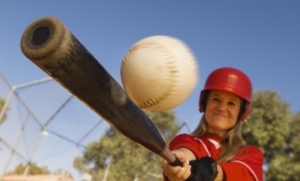Elbow Ulnar Collateral Ligament Sprain and Tear
 Ulnar Collateral Ligament sprain (or tear) is a condition that causes pain along the inside of the elbow. UCL injuries can affect athletes in sports that require throwing including: baseball, football, tennis, water polo, and javelin throwing. Baseball is the most common sport involving UCL injuries, and baseball pitchers are the athletes most treated for UCL injuries. These athletes are more likely to have complete tears (Ford et al.). Most UCL injuries are strains and are not complete tears of the ligament.
Ulnar Collateral Ligament sprain (or tear) is a condition that causes pain along the inside of the elbow. UCL injuries can affect athletes in sports that require throwing including: baseball, football, tennis, water polo, and javelin throwing. Baseball is the most common sport involving UCL injuries, and baseball pitchers are the athletes most treated for UCL injuries. These athletes are more likely to have complete tears (Ford et al.). Most UCL injuries are strains and are not complete tears of the ligament.
The Ulnar Collateral Ligament of the elbow, also known as the Medial Collateral Ligament, is located on the side of the elbow next to the body. It is made of a thick band of ligamentous tissue which forms a triangular shape along the medial elbow. The Ulnar Collateral Ligament (UCL) supports the inside of the elbow and along with the Lateral Collateral Ligament, stabilizes the elbow.
Symptoms and Causes of Injuries to the Ulnar Collateral Ligament of the Elbow
The main symptom of an Ulnar Collateral Ligament injury is pain along the inside of the elbow, which may appear suddenly or develop over time. The pain is most often in the dominant arm. Pain may be felt when you close your hand or clench your fist. In the case of UCL rupture, immediate symptoms may be pain and a pop with the single throw of a ball (or other object). Today, injuries to the UCL are more common in young people, ages 10-18, possibly due to longer playing seasons for youth sports and higher competition levels, which means more practice and tournament time.
Baseball is the most common sport involving UCL injuries, and baseball pitchers are the athletes most treated for UCL injuries.
Ulnar Collateral Ligament sprains and tears are most often caused by overuse and repetitive stress. When the force on the ligament is greater than the tensile strength, the ligament may be stretched or torn. In some cases, a fall can cause a rupture of the UCL. Movements that put too much stress on the elbow ligament, such as repeatedly throwing objects like a baseball, can damage the Ulnar Collateral Ligament. Micro-tears in the ligament can lead to degeneration and rupture of the ligament.
Diagnosis and Treatment of Injuries to the Ulnar Collateral Ligament of the Elbow
Ulnar Collateral Ligament injuries are not the only cause of elbow pain, so it is important to be evaluated by a physician to determine the proper diagnosis. If you are suffering with elbow pain and ready to be evaluated and get treatment, Dr. Shaun Lehmann at Houston Sports Medicine is well-prepared to assist you in the healing process. Our physician has years of experience treating elbow pain, and offers multiple nonsurgical treatment options that stimulate your body to naturally heal. Physical Therapy, Platelet Rich Plasma (PRP), and Prolotherapy are a few of the nonsurgical treatment options used at Houston Sports Medicine. Our physicians are ready to help you determine the course of treatment best for you.
During your initial evaluation, your physician will obtain a medical history, complete a physical exam, and determine if any diagnostic imaging, such as MRI, needs to be ordered. The physician may also evaluate the health of your musculoskeletal structures and tendons using the onsite Diagnostic Ultrasound. Once you have been evaluated, our physicians will discuss your condition with you and create a treatment plan best suited for your condition.
Houston Sports Medicine is located in The Woodlands, Texas. Many of our patients are residents of Conroe, Tomball, Cypress, Kingwood, The Woodlands/Spring, Magnolia and all parts of Houston.
Ford, G.M., Genuario, J., Noonan, T.J., Kinkartz, J.D., Githens, T., & Murayama, S. “Return to play after nonsurgical treatment of elbow ulnar collateral ligament injuries in professional baseball players.” Orthopaedic Journal of Sports Medicine 2.3 (2014). Web.
